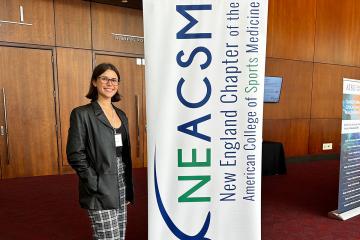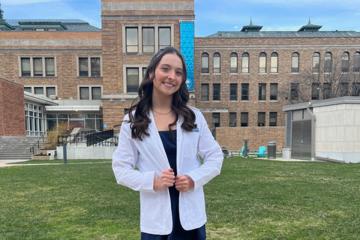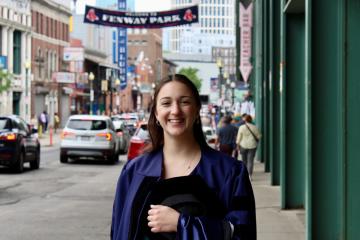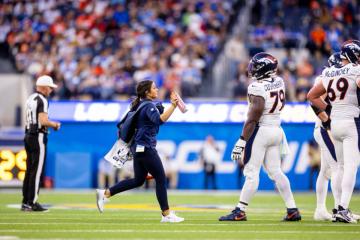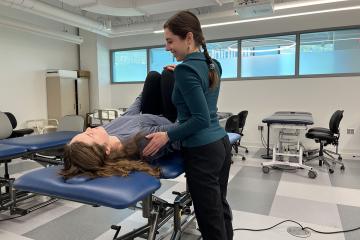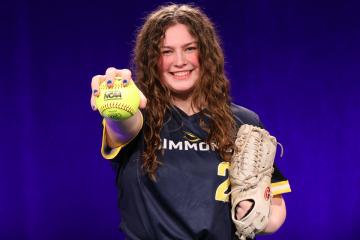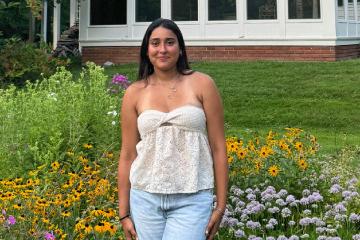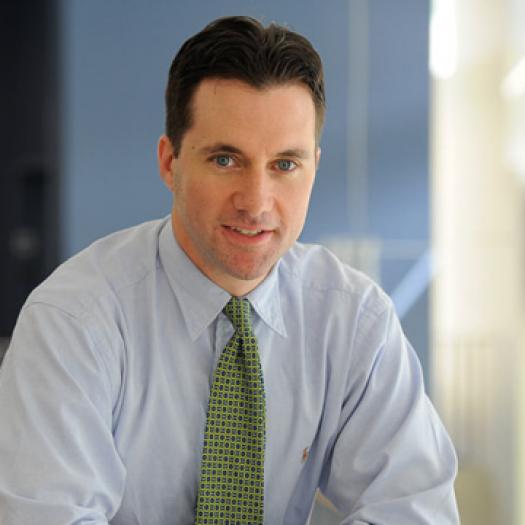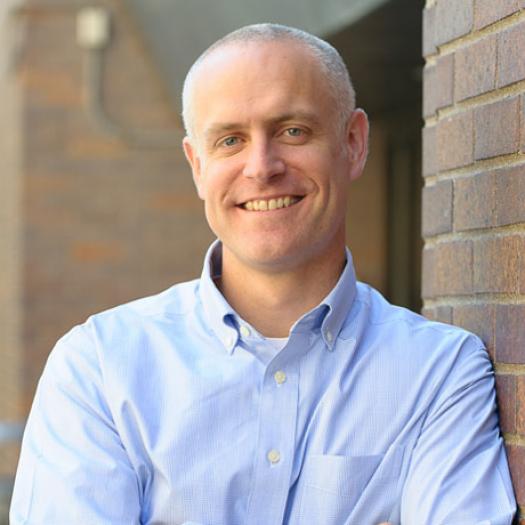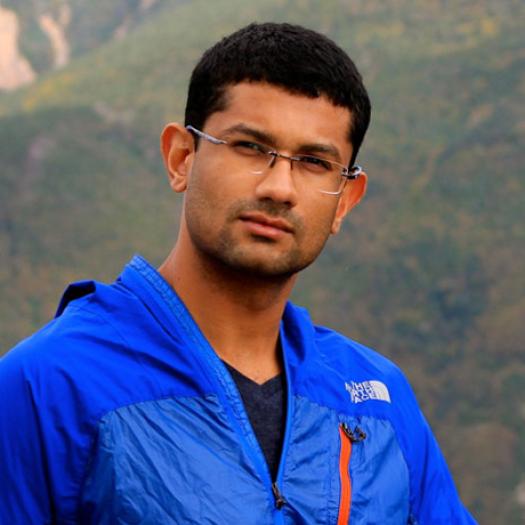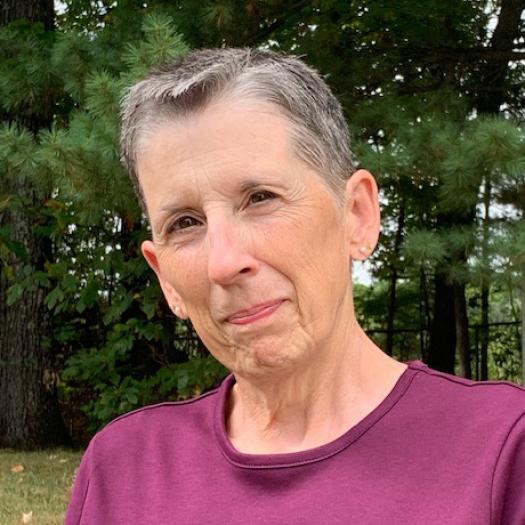Health and Exercise Science + Physical Therapy (3+3)
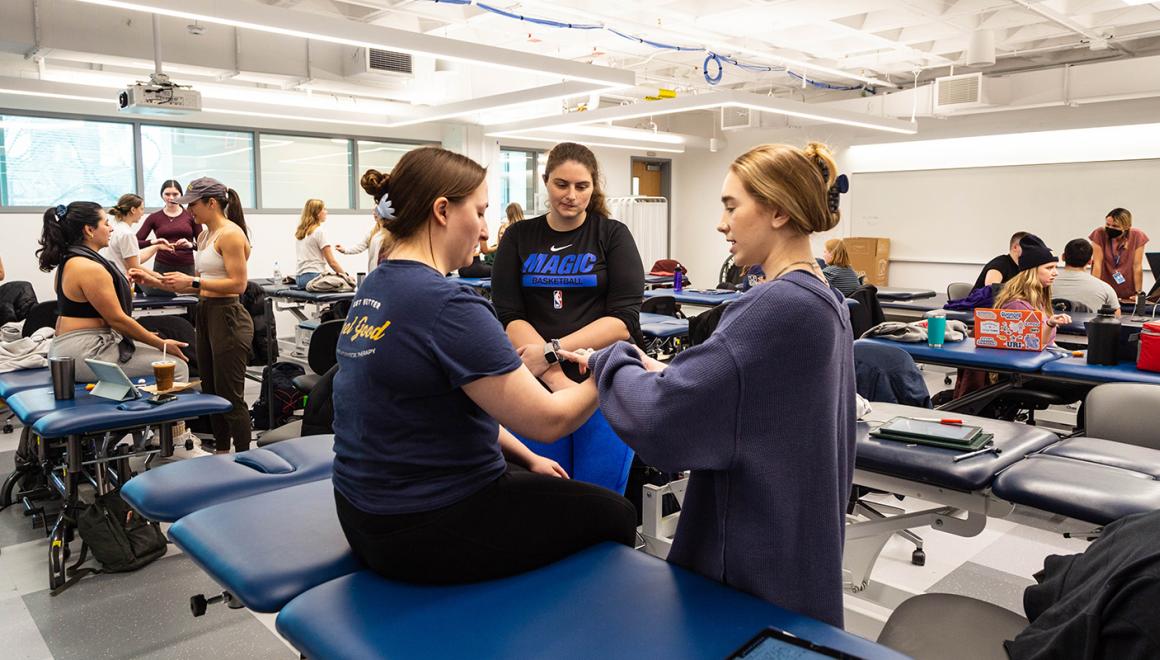
Empowering movement and improving lives through physical therapy
Physical therapy goes beyond rehabilitation — it’s about empowering movement, improving quality of life, and advancing health equity.
At Simmons, you’ll earn your physical therapy degree from a trusted leader with more than 75 years of experience in PT education. Our graduates consistently achieve high NPTE pass rates and become leaders who pair technical excellence with ethical practice and community responsibility.
Our accelerated six-year program combines our Bachelor of Science in Health and Exercise Science with a Doctor of Physical Therapy, helping you launch your career faster.
As a DPT student, you will:
- Learn the latest research in biomechanics, neuromuscular rehabilitation, and patient-centered care from expert faculty
- Advance your techniques in state-of-the-art laboratories
- Engage in small-group discussions focused on clinical practice
- Build skills through full-time clinical internships with experienced clinical practitioners
What Will You Learn in Simmons’ Accelerated DPT Program?
At Simmons, science and health professions are strengthened by community needs. We foster an inclusive, collaborative environment rooted in innovation, evidence-informed practice, and lifelong adaptability in a rapidly changing healthcare landscape.
Our accelerated DPT program begins with a Health and Exercise Science major, covering anatomy, physiology, nutrition, health assessment, and behavior. From there, you’ll transition to our graduate program’s problem-based, self-directed approach. You’ll use case studies to integrate science, clinical knowledge, and the psychosocial and ethical dimensions of care.
In small groups, you’ll work directly with faculty to develop clinical insight and professional behaviors. You’ll also gain integrated clinical experiences and full-time internships at Boston’s world-class medical centers.
Our DPT graduates practice across diverse healthcare settings and are known for their clinical expertise, leadership, and confidence.
Clinical and Research Opportunities in Boston
Simmons partners with more than 850 clinical sites, including Boston Children’s Hospital, Boston Medical Center, Brigham & Women’s Hospital, and Boston Sports Medicine. Located in Boston, you’ll train near some of the nation’s top teaching hospitals with access to professional role modeling, patient care, and teaching experiences.
You’ll also complete a capstone research project and present your findings at Simmons Physical Therapy Research Day.
Spotlight on Exercise Science + Physical Therapy (3+3) Students and Alums
100%
Employment Rate
100% of Simmons graduates are employed as physical therapists within six months of graduation.
100%
Pass Rate
Simmons graduates have a 100% ultimate pass rate for the physical therapy exam.
6:1
Student to Faculty Ratio in Tutorials
Tutorials offer unique case-based learning opportunities in which students, guided by faculty, deepen their independent investigation and collaborative problem skills.
75+
Years of Physical Therapy Leadership
Simmons has been a respected leader in physical therapy education for over 75 years.
75+
Years of Physical Therapy Leadership
As one of the first universities to offer physical therapy education in the U.S., Simmons has set the standard as a trusted leader in the field.
#1
First-time NPTE Pass Rates
We have the highest first-time NPTE pass rate of Boston physical therapy programs.
*Results from Two-Year First-Time Pass Rates 2023-2024 by School Physical Therapist Programs, 2/2/25 , Federation of State Boards of Physical Therapy.

